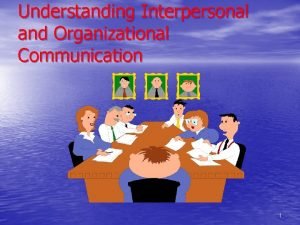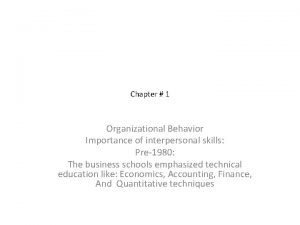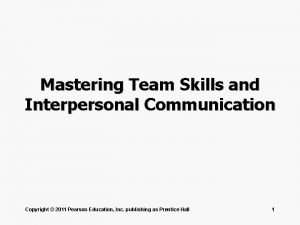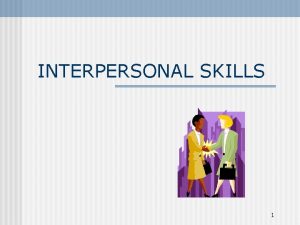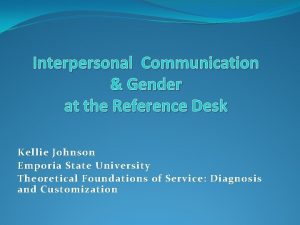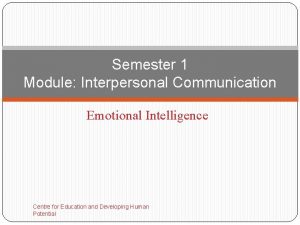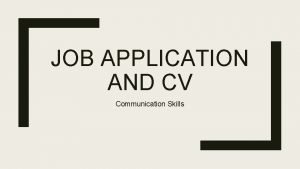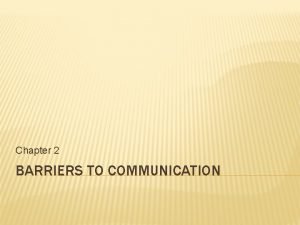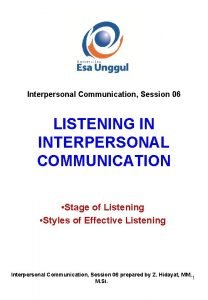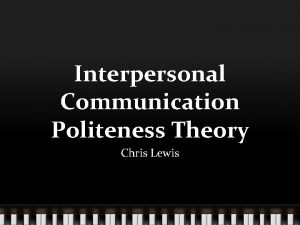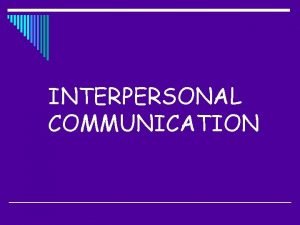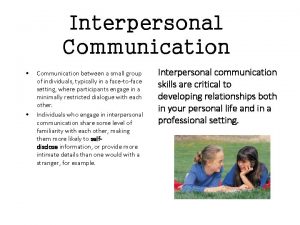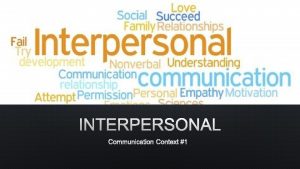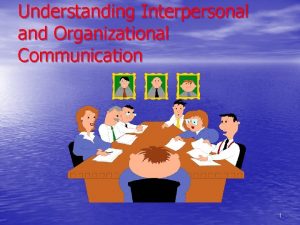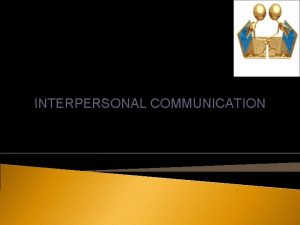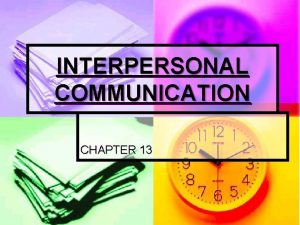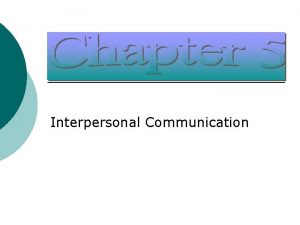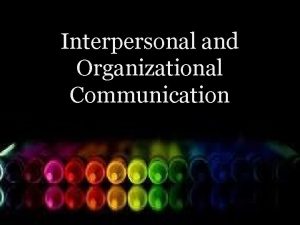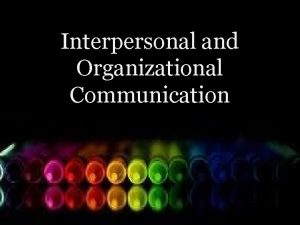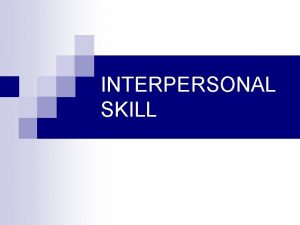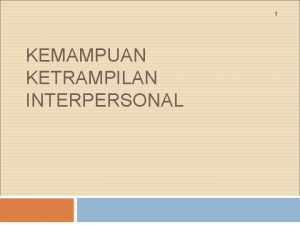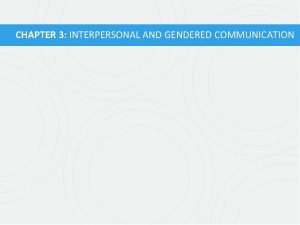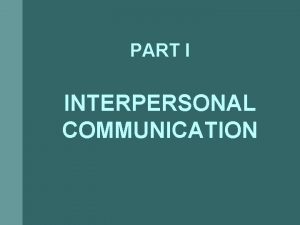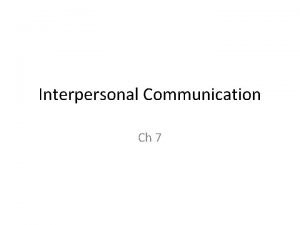Interpersonal and Organizational Communication Communication in an organization


















- Slides: 18

Interpersonal and Organizational Communication


�Communication in an organization is important in bringing about coordination, understanding and unity in the overall strife to attain organizational objectives. �There are various means by which messages may be transmitted such as words, pictures, and body languages.

�Each manager has a number of relationships with other individuals within his area of responsibility. �Methods have been to developed to improve upward communication such as counseling, grievance systems, consultative supervision, meetings, suggestion systems, opinion surveys, participation in the social groups and encouragement of employee letters, among others

A Model of Communication �It is the transfer of information and understanding from one person to another. �It involves two people – a sender and a receiver.

Importance of Communication �Organizations will fail without communication. �Coordination and cooperation become impossible if people cannot communicate their needs and feelings to others. Every act of communication influences the organization one way or another.

�Management ideas will remain armchair thoughts until a manager puts them into effect through communication. �The best plans are worthless unless properly communicated for implementation. When communication is effective, it tends to encourage better performance and generate job satisfaction because people will understand their jobs better and feel more involved in them.

The Communication Process �It is the method by which a sender reaches a receiver. �This Process requires six steps : Develop an Idea Encode Transmit Receive Decode

The Communication Process Develop an Idea The first step is to develop an idea or thoughts that the sender wishes to covey. Unless there is a worthwhile message to transmit, all other steps will become useless.

The Communication Process Encode The idea is put into suitable words, charts or other symbols for transmission. The sender should determine at this point the method of transmission so that the words and symbols may be organized in a manner suitable for the type of transmission chosen.

The Communication Process Transmit The channels of communication should likewise be determined together with the proper timing in sending the message. The communication channel should as much as possible be free from barriers or interferences, in order that the message will have a good chance of reaching the intended receiver and holding the receiver’s attention.

The Communication Process Receive The message is transferred to the receiver who tunes it up to receive it. Without an effective reception, the message fizzles out into nothingness.

The Communication Process Decode The sender’s intention is for the receiver to understand in full the message conveyed. It is in the receiver's mind that understanding can take place. Telling is not sufficient communication in unless understanding at the other end is brought about.

The Communication Process Use The final step in the process is for the receiver to use the communication, either by ignoring it, performing the task called for, storing the information or doing otherwise, as directed.

The Rule of Five �The entire set of five receiver steps: Receive Understand Accept Use Feedback If the communication successfully undergoes these five steps with a receiver, the communication can be said to be successful.

Two-way Communication The two-way flow of information is referred to as feedback loop and communication loop.

Other benefits 1) Frustration is reduced and favorable feelings are usually generated. 2) Accuracy of work is much enhanced.

Difficulties caused by two-way communication 1. Two people may strongly disagree about some item, but may not realize until they established two-way communications. 2. Cognitive dissonance takes place when people receive information which is incompatible with their value systems or other information they have.
 Interpersonal and organizational communication
Interpersonal and organizational communication Organizational and interpersonal skills
Organizational and interpersonal skills What is mass communication
What is mass communication Block arrangement essay
Block arrangement essay Interpersonal intrapersonal skills
Interpersonal intrapersonal skills Mastering team skills and interpersonal communication
Mastering team skills and interpersonal communication Pengertian interpersonal skill
Pengertian interpersonal skill Gender interpersonal communication
Gender interpersonal communication Interpersonal communication and emotional intelligence
Interpersonal communication and emotional intelligence Special skills for a job application
Special skills for a job application Intrapersonal barrier
Intrapersonal barrier Interpersonal skills in social work
Interpersonal skills in social work Interpersonal communication self concept
Interpersonal communication self concept Process organization in computer organization
Process organization in computer organization Basic interpersonal communication skills
Basic interpersonal communication skills Listening styles interpersonal communication
Listening styles interpersonal communication Preventative facework
Preventative facework Interpersonal communication is inescapable
Interpersonal communication is inescapable Interpersonal situations
Interpersonal situations
